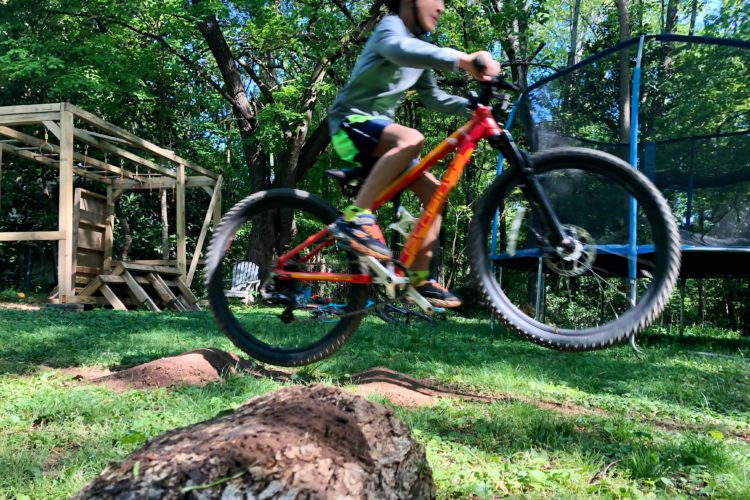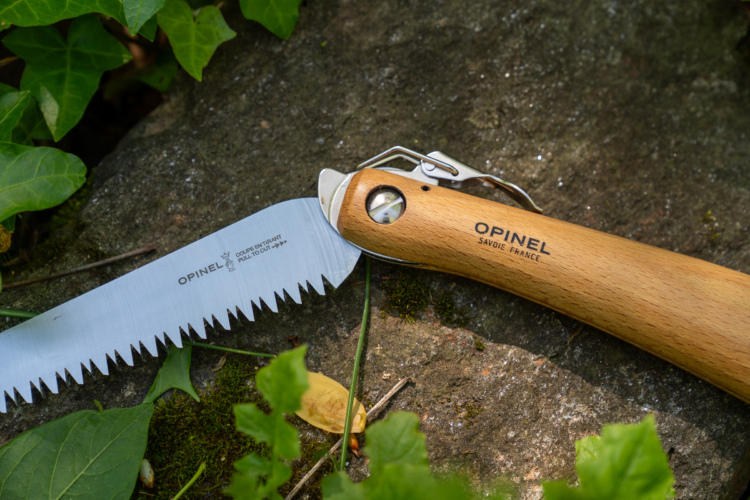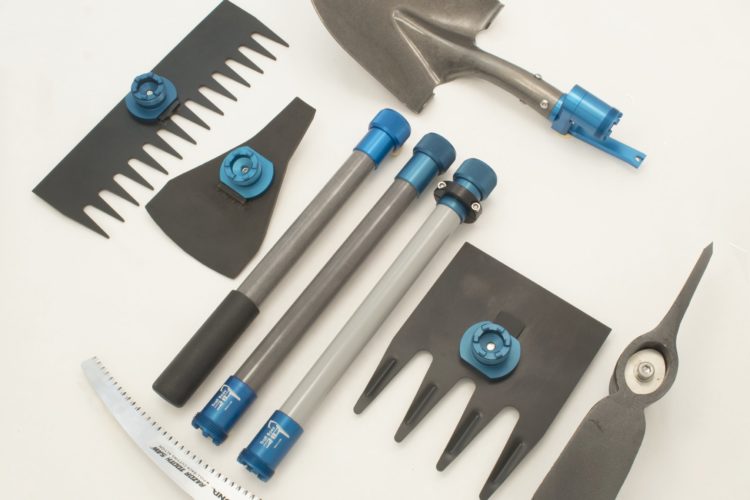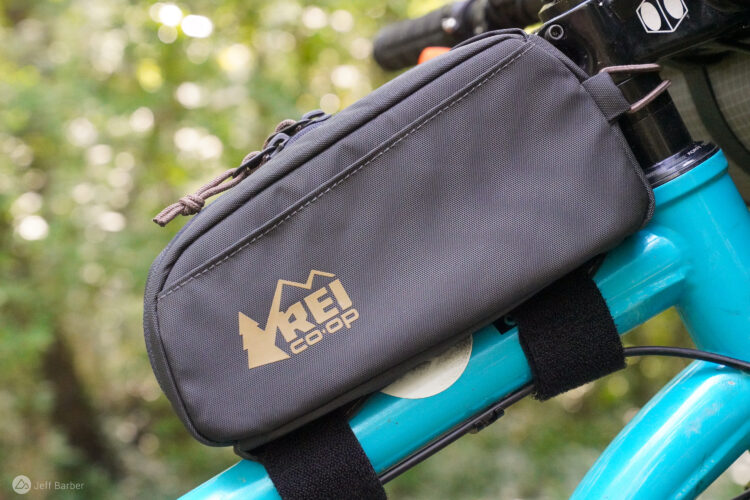
A few years ago, my trail building friends were raving about a tool I had never heard of: the action hoe. Also known as a loop, Stirrup, Hula, and scuffle hoe, it’s a specialized gardening tool with a sharp blade for scraping off the top layer of soil and/or vegetation on the ground. It’s particularly useful — and fast! — for carving a trail that traverses a grassy area.


A useful hoe
When it comes to trail building tools, there are a few main categories, including saws, snippers, shovels, and hoes. Perhaps the best-known trail building tool, the McLeod, is a specialized hoe with a flat edge on one side and tines for raking on the other side.
An action hoe features a sharp, looped blade that runs parallel to the surface of the ground, unlike a typical hoe that’s designed to be used perpendicular to the ground. To cut trail, you simply put a bit of downward pressure on the tool while dragging it backward toward yourself. Depending on how soft your soil is, you can scrape an inch or two off with each pass. Along with the topsoil, it also cuts through roots and vegetation in your path.
My tool has a double-sided blade, so you can cut in either the forward or backward direction, though I tend to use the blade on the back side mostly.
Much more effective than ‘ride and ride’
There’s a trail-building method known as “rake and ride,” which is exactly what it sounds like: you rake a path, and then ride it. Another method is known as “ride and ride,” and in theory, if you ride a path enough times, a trail will develop. This is a particularly tempting (and lazy) method for creating a trail through a field, though in my experience it rarely works out very well.
For one, the path needs to be ridden a lot to form a trail. It also needs to be ridden regularly; there’s a good chance the trail will disappear if it hasn’t been used in weeks. The other problem is that you (and your friends) need to ride the same path over and over. In the beginning, it’s hard to remember exactly where the path is supposed to be.

The action hoe solves this. In grassy areas, you can easily cut ten feet of foot-wide trail every few minutes. Then ride!
Of course, trails through fields generally aren’t that exciting, though they are necessary. For example, a forested trail might dump out into a field and then continue in the woods on the other side. Cutting a defined path with an action hoe makes it easy for riders to find their way.
Because the action hoe is so precise, you can sculpt nice and neat straight lines, or curves. It’s an especially great tool for backyard trail building since you can also use it for weeding and gardening.

Where to find an action hoe
Trail-building tools tend to be fairly specialized, but not the action hoe. You can generally find them at Home Depot, Amazon, Walmart, Ace Hardware, and similar stores. Just remember, there are several names for the tool, so if you don’t see an action hoe, ask for it by another name, like loop or scuffle hoe.
Expect to pay about $20-35 for a quality action hoe with a full-length handle. Craftsman, Husky, Ames, and True Temper are just a few brands that make these tools.
The tool I own is an Ames action hoe, and it’s worked well for many years. I haven’t had to sharpen the blade yet, though when the time comes, it will be easy to do.

Bottom line
Trail building requires a variety of tools, and having the right tool for the job makes all the difference. Consider adding an action hoe to your shed to make cutting new trails quick and easy.
Your turn: What’s another trail building tool you always needed, but didn’t know existed?





















1 Comments
1 week ago